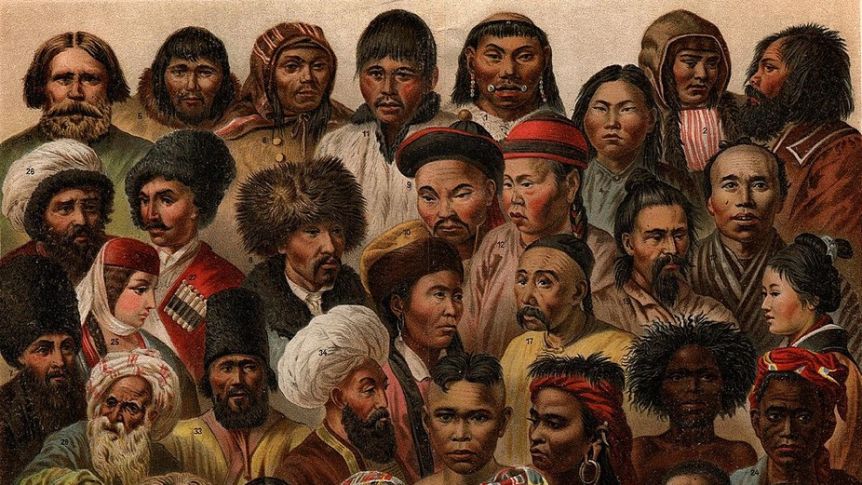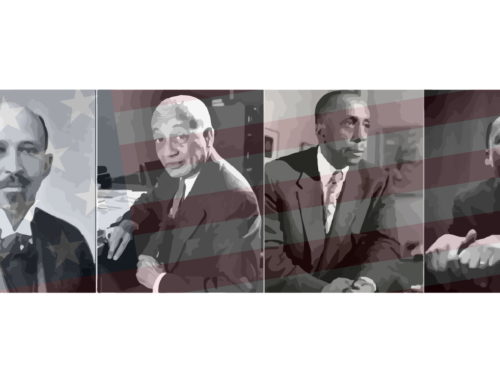By Glen Paul Hammond
“The very idea that cultural practices belong to racial groups misunderstands both race and culture.”
—Richard Thompson Ford
What is systemic racism? Are the examples of it given by Critical Social Justice theorists really nefarious and oppressive tools employed by one race to dominate another? Is there perhaps a different, more accurate way to both understand and, so, articulate some of these items? If there is, will a better understanding of what makes multicultural societies diverse allow us to utilize these differences in a way that decreases division and increases social capital? In order to answer such questions, it is necessary to see that cultures, like families, have systems and these systems have basic requirements or requisites that allow them to function. Cultures are not necessarily specific to races but, as their systems evolve over time, they are often associated with a particular geographical space that has been peopled by a particular ethnic group over generations.
One of the unique challenges of a multicultural society, then, is a clashing of systems. In the multicultural nations of the West, this clash is being presented as a struggle between races. In many instances, however, what is being racialized is cultural in origin. As a result, what is being designated as a product of supremacist mentality may more accurately be viewed as a product of a diverse coming together of cultures—with members of each asserting a belief in their own preferred system or, in some cases, articulating struggles they may be experiencing in acculturating themselves to long established systems in countries they were not born into. This can be readily seen in many of the points highlighted as examples of systemic racism by proponents of critical theories on social justice who assert that the characteristics of a culture’s system are artifacts of that culture’s ethnic group and, so, specifically structured to their exclusive benefit (Lindsay). By making culture all about race and power, however, these theories ignore the organic nature of every culture’s development and they serve to create divisions amongst people of different ethnicities who, having willingly gathered together from different parts of the globe, wish to engage with each other in mutually beneficial ways, utilizing for themselves what the founding culture has to offer. This can be explained by focusing on two items that proponents of Critical Social Justice theories often list as unjust or systemically racist characteristics of Western culture, sometimes referring to the latter as “white culture”: Time rigidity and Individualism (Gray 2019 ; Diangelo, 2010).
According to the American historian and sociologist Lewis Mumford, the mechanical clock changed everything in the Western world (Lattler). To restore a sense of routine and order during the chaotic post-Roman period, bells in medieval monasteries identified seven intervals throughout a single day. By the 13th century, this hacking up of the day took the form of mechanical clocks on local bell towers that used a dial and a hand to translate “the movement of time into a movement through space” and that, unintentionally, resulted in the psychic effect of synchronizing human activities (Lattler). According to Daniel Lattler, in his article How the Clock Changed the World, “Time keeping passed into time-serving and time-accounting and time-rationing.” Individuals began to “accommodate themselves to the clock rather than to organic needs” (McLuhan, Media 158). Individuals ate not when they were hungry but when it was time to eat; they woke or slept at designated times, rather than when they felt roused or tired.
The technology of the clock created an environment that organically produced a cultural system dictated to by time. Function, environment, system, requisite, and an ethos for punctuality unconsciously evolved from an intentional need to restore regularity after the fall of the Roman Empire: The ringing of the bell seven times a day, as a requisite for order in the life of the monks, created the concept of a hacked up day that led to a centrally placed mechanical clock that synchronized human activities in a regional area, across an entire geographical space. The technology changed the environment and the environment influenced the individuals living in it.
Yet, the mechanical clock itself was only part of the influence; according to Marshal McLuhan, the acceptance of cutting up time into abstract uniform units was rooted in the environment of another technology.
While Mumford asserted that the clock provided the technological environment that created the printing press, Marshal McLuhan pointed out that the sequencing and fragmentation inherent in the phonetic alphabet made the “visual and uniform fragmentation of time” possible (159). These twin technologies, which hacked up time and speech, led to the ability to view the world in such a way that could be divided and sub-divided. This, in turn, led to more innovations that further influenced those parts of the West so affected.
Mumford highlighted the association between “the clock and the printing press and the blast furnace” and McLuhan traced the evolution of these three innovations further back to their psychological roots (McLuhan, Media 168). The phonetic alphabet, he argued, inspired the mechanical clock which, in turn, created an environment that produced both the printing press and the melting of materials, providing the inspiration for Adam Smith’s economic theory of the division of labor. The Gutenberg Era’s ability for indefinite repetition—translating knowledge “into mechanical production by the breaking up of any process into fragmented aspects to be placed in a lineal sequence of movable, yet uniform, parts” (McLuhan , Media 126) — can, in this way, be linked to the staggering success in the innovation and implementation of the industrial assembly line. A concept introduced to culture inspires its technological innovation, which then lays the groundwork for the inspirational cycle to begin again, exposing, in this case, the origins of time rigidity in a culture that psychically evolved alongside the technology it produced.
The industry that came from the invention of the mechanical clock led to the invention of the train, which then inspired the creation of a railroad system that could not operate on local mean time and, thus, required a transition to Standard Time, which, as a result, further enhanced the spread of efficiency and coordination of social energies across huge geographical spaces populated by large masses of people. The outcome was material and economic prosperity that, over time, became embedded and reinforced in the social norms of a culture that adopted an ethos of punctuality, which was then reinforced to keep the system functioning.
Of course, it is up to the reader to decide if the benefits of such sensibilities outweigh the inherent sacrifices—with any gain there is a loss and vice versa. Anthropologist Edward T. Hall labelled the differences between time rigid cultures and time relaxed cultures as monochronic versus polychronic. Hall noted that “monochronic cultures, such as America and northern Europe, are task-oriented” (Engle). In such cultures, individuals sequence events that need completing, oftentimes prioritizing importance, which, of course, is in keeping with the influence of the technological environments highlighted above. As a means to promote the system and help succeeding generations gain its benefits, the apparatus of culture promotes the passing on of social norms from parent to child as a matter of function, so as to help each become contributing and successful members of society. According to Hall, Polychronic cultures are, by contrast, “oriented toward people, human relationships and the family, which is the core of their existence”(Engle). As a result, members of such cultures pass their values down to their children to keep their own systems functioning.
In Jane Engle’s 2005 article for the Los Angeles Times, Punctuality: Some cultures are wound tighter than others, she asserts that in polychronic cultures (such as are found in the Mediterranean and many Latin American nations), “following a schedule is far less important than catching up with friends and family.” The Latin American analyst, Andy Case, also cited climate as a contributing factor, noticing that “as you get closer to the equator, the pace of life seems to slow” (Engle). Anecdotally, the writer of this article has also observed in his own travels that the more rural and naturally beautiful locations tend to have a similar effect on the subcultures of even monochronic societies—individuals in parts of British Columbia or Alberta, for example, seem to have a much more difficult time prioritizing a backlog of emails waiting for them at the office above stopping to view passing wildlife on a vista of mountain peaks or an ice glacier extending across a landscape than, say, someone moving through the urban environs of downtown Toronto. Yet, the economic capacity of a location appears to be one of the most significant factors that serves to reinforce punctuality as a value, bringing to mind the oft heard & repeated maxim: “Money is time; time is money” (Engle).
The concept of time promotes its measurement, and this encourages the concept of duration, which in turn influences the psychology of the individuals acculturated to this particular view of the world. It is this interplay between technological development and the shaping of one’s perception that makes up a large part of a region’s culture and the social norms that allow that culture to function. It evolves and weaves itself organically into its very fiber.
Individualism as a value is another item that is frequently identified as a systemically racist characteristic of Western culture. It is, therefore, incumbent to look into the history of its development in the societies that promote it and, by so doing, hopefully better understand both its function and subsequent value before attempting to categorize it as being either a product of racism or culture.
Firstly, the dominant religion of the West has been Christianity, and a key claim of anthropologists studying this religion is that a crucial corollary of “social formations where Christianity has become important” is the development of individualism as a prominent value (Robbins). As part of its theology, the individual is the sole unit of salvation (Robbins). An individual’s sins are his own and his redemption occurs through an independent and personal relationship with the Godhead. As Joel Robbins puts it in his article Dumont’s Hierarchical Dynamism: Christianity & Individualism Revisited, scholars have noticed that this perspective manifests itself in such demonstrable behaviors as the “breaking with kin…the ability of converts to directly challenge the norms of the society in which they are embedded, or to speak their minds sincerely, unfettered by social convention” (Robbins). The individual may still shift perspective to act as a member of the collective in, for example, attempting to be a witness for the faith he espouses, but, in the end, it is the ultimate responsibility of the individual to maintain his relationship with the deity and not the tribe. As a result, Christians are judged not by the group or nation they belong to but, independently, for their own deeds and, to borrow a well-known phrase, for the content of their own character.
This is highlighted in one of the Gospel’s best-known parables—the Good Samaritan: In the book of Luke, Jesus tells a story of a man who is attacked on the road by thieves and left naked to die. While lying there, three potential saviors encounter the man. Two, the priest and the Levite, are members of the injured man’s own tribe, but walk past him without giving aid; the third, however, a Samaritan, who is a member of a despised outgroup of the Jews, stops and rescues the man—succoring his wounds, carrying him to safety, then paying for both the victim’s current and future medical expenses. At the outset, the simplest and most obvious interpretation of the parable is clear: The true quality of a man is not his politics, his religion, or his ethnicity, but his character. The solidarity that exists between savior and victim is the nature that they share—human nature— and, through this, the parable asserts that the biggest difference between men is the difference between those who will turn aside and help someone in need versus those who will not. To incorporate a sentiment of Victor Frankl and apply it to the parable’s deeper meaning: “There are two races of men in this world…the “race” of the decent man and the “race” of the indecent man.”
Along with Christianity, literacy is considered another source in the evolutionary emphasis of individualism in Western culture. The oral tradition of storytellers, with the Anglo-Saxon scops, the bards of Wales, Norman minstrels, as well as gestours or conteurs who populated the royal courts of Europe with a repertory of tales became the source material for later subjects of literature (Loomis). However, once reduced to writing, the narratives became available to smaller groups of individuals as well as to solitary readers. According to Loomis’s history in Medieval Romances, “The multiplication of manuscripts and the increased practice of reading gradually forced the professional storyteller out of the palace and the castle, and by the fourteenth century we find him usually catering to the unlettered, in the public square or the tavern” (ix). Literature, as a result, became the property of the common man.
Over time, as unlettered man became literate man, the individual’s ultimate separation from the collective increased. The oral tradition gathers a group together while the literary tradition disperses it. The priest, who is the only one who can deliver the Good News, loses his audience when the believer can, as a result of the Gutenberg Era, receive it directly from the red ink of God himself. As the noted literary critic Harold Bloom observed, reading is “a solitary praxis” (21).
The solitary nature of this act encourages self-reflection. Marshal McLuhan explained that the visual stress of the lettered word numbed the other senses to create a powerful fixation that turned the reader’s mind inward to a private point of view, which allowed him to process and understand the writer’s message written with “semantically meaningless letters” that corresponded to “semantically meaningless words” (Media 90). As a consequence, the breach between the auditory and visual experience of the solitary reader, creates “much dissociation of inner sensibility” (McLuhan, Media 95). He is, according to McLuhan, freed from “the tribal trance of resonating word magic,” and, in the process, liberated from the web of the group (McLuhan, Media 91). Literate man becomes literary man and literary man is independent man. This is one reason why McLuhan asserted that the philosopher Rousseau, himself, warned of its effect, stating that “Literate man undergoes much separation of his imaginative, emotional, and sense life” (McLuhan, Media 95). In fact, the prime directive of the first essayist, Michel De Montaigne, was exactly this. Montaigne believed that each of us has a personality that included “an inner world and an inner self and an outside self and a comparatively public world” (xx) His essays were to him solitary introspections; not his teachings, but his study, not a lesson for others, but for himself (xxi). Montaigne used the written word as a means of self-reflection, an exercise that turned man inward so that he could have a discussion with himself (xx).
Self-reflection encourages self-awareness, which, in turn, brings to consciousness both meta-cognition and the existence of an inner and outer world. It is no wonder then that the literate Western man described above became the— “I think, therefore I am” —man of the Enlightenment. From a psychological disposition that acknowledged an individual’s inner world, came the psychological need to better understand the outer world and, so, the acquisition of knowledge, independent judgement, and the faculty of reason became psychic virtues. As a result, Western culture further reinforced individualism as a value, promoting personal responsibility as an agent of its function. A society that values the individual produces an environment that allows individuals to make their own independent choices. Since a culture cannot grant such a right without also ensuring freedom, liberal democracy became an innovation of the Enlightenment. This fundamental right has historically been viewed as a significant pull factor for immigration to the West.
The basic premise of multiculturalism is the importance of culture; it seems highly ironic, then, that the founding cultures of Western nations so attractive to the rest of the world would now find themselves under seemingly non-negotiable pressure to dismantle many of their core tenets. Not only might the pulling out of these threads have unforeseen consequences to the very fabric of the society it supports (such as in the case of social norms that are the stalk and root of liberal democracy, with all the personal freedoms that it affords), but there is also, it can be argued, from a human rights perspective, a moral issue involved in the protection and maintenance of those cultures: If French Canadian culture, for example, is lost in Quebec, where else on the globe can it be found? Likewise, the same can be said for English culture in England or Irish culture in Ireland. A Japanese Quebecker can always go to Japan to experience Japanese culture at its root , but where does an Englishman living in England or Irishman living Ireland go if their culture is lost at the source?
Culture involves the training, development, and refinement of mind, morals, or taste. In the Merriam-Webster Dictionary, the definition of “culture” highlights customary beliefs and social forms, as well as “characteristic features of everyday existence (such as diversions or a way of life) shared by people in a place or time;” it includes shared attitudes, sets of values, goals, practices, and an “integrated pattern of human knowledge, belief, and behavior that depends upon the capacity for learning and transmitting knowledge to succeeding generations.”
According to the above definition, rather than being race specific, individualism and time rigidity seem to be more accurately defined as cultural characteristics that over time became interwoven as part of a particular society’s system of operating. It seems, then, at least in the case of these two traits, that systemic racism may more accurately be defined as systemic culturalism. This does not mean, however, that there is not a clash occurring between systems in the West (rather it mostly explains it); it simply suggests that it may not always be best categorized as a specifically racialized one. To give a personal example, in my parent’s household a similar collision of systems occurred between my time relaxed Maltese mother and my time rigid English/Irish Canadian father; my sister took after my father and I took after my mother; as a result, a similar scenario played itself out (but has since been reconciled) between me and my time rigid Hungarian wife. The clash of cultural systems is also not something we have been unaware of in the past, nor is it exclusive to peoples of different skin color: The 1993 BBC television series A Year in Provence, for example, uses it as a satirical premise, as do the films My Big Fat Greek Wedding and, in a more dramatic way, Zorba the Greek. It must also be noted that—when using metrics such as health outcomes, educational achievement, and economic success—there are numerous examples of several minority racial groups operating within Western culture that are outperforming the so called “white group” born in situ for generations (Arora).
Jane Engle’s article for the Los Angeles Times mentioned above, presents a light-hearted approach to the frustrations involved in the kind of clash of cultures that occur when travelling. The advice she cites is that one should relax, “Learn to breathe… Let the other culture take over a little.” Afterall, she notes, “if you wanted to be immersed in the familiar, you would never have left home” (Engle). Yet, multiculturalism in the West has brought all the world together, with all the peoples of the globe interacting on a daily basis cheek by jowl. In such an atmosphere, something as simple as the functioning of a queue system in an ice cream parlor can be an exercise in the diverse social practices of culture.
So, what to do about it?
In his book, The Global Village, Marshal McLuhan noted that if the systems of societies were incompatible, they will always fall into a confrontational situation with each other (95). Harvard sociologist, and pro-multiculturalist, Robert Putnam, found that while such environments don’t necessarily have to fall into “open” conflict, recognizing the challenges inherent in them by eliminating the blind spots on both the political right and left are necessary to build a future that can increase such an environment’s social capital (Todd).
In the case of time rigidity, the issue may already be in the process of transition in the psychological disposition of the West. In his extensive study on the way technology influences culture, Marshal McLuhan asserted that since technology changes the environment and the systems that evolve to adapt to it, transfer of information in the digital age will swallow up the West’s mechanical age values of time sequencing in an information overload (Global 11). As a result, such things as information gathering will no longer be linked to duration, because the computer now “steps up the velocity of logical sequential calculations to the speed of light” and produces information instantaneously and in its entirety (Global 103). This is McLuhan’s reversal effect: When a technology is pushed to its limits, it reverses itself and the environment that originally produced it. With the mechanical processes of sequential operations nullified by the environment that digital technology creates, the psychological impact will force an adaptation to occur. Travelling to an office and coordinating times to facilitate physical meetings with colleagues may, as a result, become less and less important to both the functioning of the operation and, so, to the perceptions of those participating in it; since the same can be accomplished by transferring information electronically, the functionality of creating a time relaxed space for each user to access the information when it best suits them may become the new social norm that is promoted.
Furthermore, and this is part of this article’s objective, disassociating race from culture and identifying systems as being wrapped up in function can serve to depersonalize cultural expectations; this, in turn, can help individuals of competing cultures to destigmatize their interactions with each other. When social norms have been around for so long that no one remembers the functional origins, their requisites are often reinforced with social rewards or punishments that cease to have any conscious logic or accuracy behind it. In the case of punctuality, for example, someone who is late is often charged with that behavior being proof of some sort of flaw in their character—laziness, lack of respect, poor time management etc. This is both Eurocentric (specifically, Northern) and unhelpful. When the time rigid individual realizes that in a time relaxed culture their insistence on punctuality would be greeted with similar negative reinforcers, such as the accusation of being domineering, too demanding, uptight, and overbearing, the entire conflict can be brought into perspective. As such, if being on time for an event, like scheduled attendance in a classroom, is necessary for its function, then explaining it in just such a way might make all the difference—after all, and even though this may be an offshoot of an inculcation in individualistic culture, people should always know why they are doing what they are doing, so that they can best decide whether it is something they themselves believe is worth doing. On the contrary, if being late for a relaxing day at the beach has nothing to do with the function of the planned event, then punctuality can be presented to the time rigid individual as an unnecessary requisite that has now become dysfunctional.
Individualism, and all that it has to offer, is a much harder concept to negotiate or to consider abandoning. This is especially true since the West is not without its own brand of collectivism, which exists due to the fact that no society is purely individualistic. The anthropologist Louis Dumont, for example, notes that no collection of human beings living in a society can live completely without what he calls “holist configurations;” rather, “the implementation of individualism, when it is implemented at all, is always selective [and] restricted to only some domains of social life” (Robbins). Individualistic societies promote individualism as a higher rank value; at the same time, they also understand the necessity for what Richard Werbner referred to as the functionality of “alternating personhood;” by which he meant, the lower ranked ability for individuals to shift between acting as part of a collective, through “dividualism,” whilst, at the same time, being able to transition to the higher ranked one, so that, if needs must, a member of the group can step outside the herd to both claim personhood and to reach one’s full potential as an individual (Robbins). Unlike collectivism, which lends itself to the negatives of an in-group demonization of an out-group dynamic, Ensor’s history of England noted that individualist principles, along with being a fundamental source for the abolition of slavery, were also at the heart of all the reforms that led to the democratization of England—listing such items as the enfranchisement of the vote (which eventually extended to both men and women irrespective of class), the abolition of purchase in the army, elementary education, and open competitive examinations that allowed equal opportunity for entrance into such institutions as the civil service and higher education for both sexes (124). Meritocracies, in this way, became the offspring of individualistic societies and to provide a personal example of its egalitarian utility, allowed the Irish son of a farmer (this writer’s great grand uncle), a man who belonged to a race considered inferior by the English, to acquire a civil servants position by placing 36th in that kingdom’s Open Competitive Examination for the year 1891.
The historian G.M. Trevelyan described culture as part of a society’s river of life, flowing in the lower part of its course (x). Traditions, technologies, norms, and practices overlap with new ones, operating both unseen and side by side in a slow and organic process of evolution. In fact, sudden changes, which recollect themselves as defining events and, so, appear like large objects thrown or fallen across that same river, are often described in a culture’s history as either catastrophic or revolutionary: Regarding this, Trevelyan cites the Black Death and the Industrial Revolution as two such examples (x). In our own age, it could be that the evolving changes in Western culture are occurring so fast that the stress of their effects, while not being identified consciously and, so, ultimately not being fully noticed or understood, are nonetheless, on some level apparent. Perhaps, as Marshal McLuhan warned, the new digital technology has become so dominant, so quickly, that society has not had a chance to adjust to all its changes and, as such, has been unable to psychically evolve in a way that would allow new systems to be organically formed and integrated into the old ones, overlapping and operating side by side for generations, so as to make their functioning emerge as a seamless part of the culture’s natural fabric.
Regardless, if the West is going to avoid what history has demonstrated time and time again are the terrible costs of collectivism along racial lines in a society that promotes competing group structures, it is in the best interests of all those who inhabit it to engage with each other in honest communication, making the necessary effort to clearly define the terms being used and the items subsumed under each so labelled. If left unchecked, a national discourse that stagnates around identity politics and racial tribalism will degrade communication to a point where it ceases altogether and, if this should occur, all sorts of terrible things can happen. Inattention, unawareness, and misdiagnosis are no longer options. In his book Understanding Media, Marshal McLuhan pointed out that we avoid knowing because it produces stress and threatens the ego and, as part of this observation, reminds his readers of Hamlet’s statement regarding consciousness making cowards of us all, through re-iterating Nietzsche’s comment that “understanding stops action” (100).
Recent events make it clear that both lack of awareness as well as inaction have too high a price to pay for any short-term comfort they might afford. In his study on the subject, Harvard Sociologist Robert Putnam warned that multicultural societies must move beyond both “historical and ethnocentric conservatism” as well as “politically correct progressivism” if they are to meet the challenges that lie ahead—with one of his ideas being “creating more opportunities for meaningful interaction across ethnic [and I would add ‘cultural’] lines” (Todd). By highlighting that individualism and time rigidity are characteristics of culture and not race, this article has attempted to be part of that endeavor. By making the claim—as Critical Social Justice theories do—that individuals who do not actively work against a system that promotes such things as individualism and time rigidity are advocates for it and, so, “supremacists” in a newly framed interpretation of “white supremacy,” the theory not only divides people in multicultural societies on ethnic lines but racializes traits and values that are not the exclusive domain of any one ethnicity. This is the very point that African American Professor of Law at Stanford University, Richard Thompson Ford made concerning a list of values that the National Museum of African American History and Culture tweeted out as being specific to “white culture.” The infographic’s list included the scientific method’s usage of cause and effect relationships, self-reliance, objectivity, respect for authority, delayed gratification, common law, rational linear thinking, the nuclear family structure, hard work, planning for the future, written tradition, politeness, protection of property, focus on intent with regards to law, as well as time rigidity and rugged individualism. In response to this, Ford argued, that Black philosophers, writers and scientists, such as George Washington Carver, or influential Protestants, such as Reverend Martin Luther King, Jr., made profound and enduring contributions “to the development of many of the values” that both the Critical Social Justice theory behind the tweet and the tweet itself now attributes exclusively to whites. Summing up his argument, he pointed out, that in the case of the United States, American culture is the culture of African Americans (Ford).
Claims of systemic racism tend to assert that a culture’s entire system (including the values it promotes) are artifacts of a particular ethnic group and, so, systemic tools of racial injustice. If this is true, then social justice can only be achieved by dismantling both a culture’s social organization as well as its entire system of operation. Exactly what proponents of Critical Social Justice theories have offered to take its place has yet to be revealed. It should be noted, however, that to intentionally replace the systems of an established culture with a new working system will, without the time for such a system to evolve organically, require political intervention on a large scale and the necessity for it to be created artificially, most probably by a group of “experts” who will then disseminate the new system of operation to all. It will, therefore, be top down in its design and require special government powers for its implementation. This modus operandi has been tried before and is authoritarian in nature. Speaking about one of the values that Western culture promotes, former US President Ronald Reagan once said, “Freedom is never more than one generation away from extinction.” So, before a culture that has been a beacon for immigrants and a safe haven for asylum seekers the world over, undertakes the gargantuan task of dismantling itself, before it undermines its own values, traditions, beliefs, innovations, history, and accomplishments, and before it eradicates the product of countless generations who toiled and sacrificed to build, preserve, and pass it on, the full awareness of what will be gained and what will be lost should be known to all. Because once Western culture and all it affords is gone, where else shall it be found?
Glen Paul Hammond has a Master of Arts in English Literature from the University of Toronto. His publication credits include a collection of short stories, entitled, Even the Moon is Frightened of Me, from Political Animal’s sister imprint, Crowsnest Books, and the educational book, The Literary Detective. Satirical cartoons and more of his writing can be found on his blog, SCRATCH.
Image: The human faces of Asia. First published in the first edition (1876–1899) of Nordisk familjebok.(Taken from Wikimedia Commons)
Works Cited
Arora, Ray. “The fallacy of white privilege—and how it’s corroding society.” New York Post. 11 July 2020. www.nypost.com.
Bloom, Harold. How to Read & Why. Simon & Shuster, 2000.
“culture.” Merriam-Webster.com. 2020. www.merriam-webster.com (18 Aug 2020).
DiAngelo, Robin J. “Why Can’t We All Just Be Individuals?: Countering the Discourse of Individualism in Anti-racist Education.” Interactions: UCLA Journal of Education & Information Studies. 2010. www.escholarship.org.
Engle, Jane. “Punctuality: Some cultures are wound tighter than others.” Los Angeles Times. 1 Dec 2005. www.latimes.com
Ensor, R.C.K. England: 1870-1914. Oxford University Press, 1936.
Ford, Richard Thompson. “Opinion: There is no White Culture.” CNN. 18 Aug 2020. www.cnn.com.
Gray, Aysa. “The Bias of ‘Professionalism’ Standards.” Stanford Social Innovation Review. 4 June 2019. www.ssir.org
Lindsay, James. “White Supremacy.” New Discourses. 2 Dec 2020. www.newdiscourses.com.
Loomis, Roger Sherman & Laura Hibbard Loomis. Medieval Romances. The Modern Library, 1957.
McLuhan, Marshal. Understanding Media. 1964. Routledge, 2001.
McLuhan, Marshal. The Global Village. Oxford University Press, 1989
Montaigne, Michel De. The Complete Works. Translated by Donald M. Frame. Everyman’s Library, 2003.
Reagan, Rongald. “Quotes.” Goodreads. 26 Aug 2020. www.goodreads.com
Robbins, Joel. “Dumont’s hierarchical dynamism: Christianity & individualism revisited.” The University of Chicago Press Journals, vol. 5, no. 1. www.journals.uchicago.edu.
Todd, Douglas. “Ethnic diversity’s ‘inconvenient truths.’” Vancouver Sun. 9 Feb 2014. www.vancouversun.com
Trevelyan, G.M. English Social History. The Reprint Society, 1948.










Leave A Comment